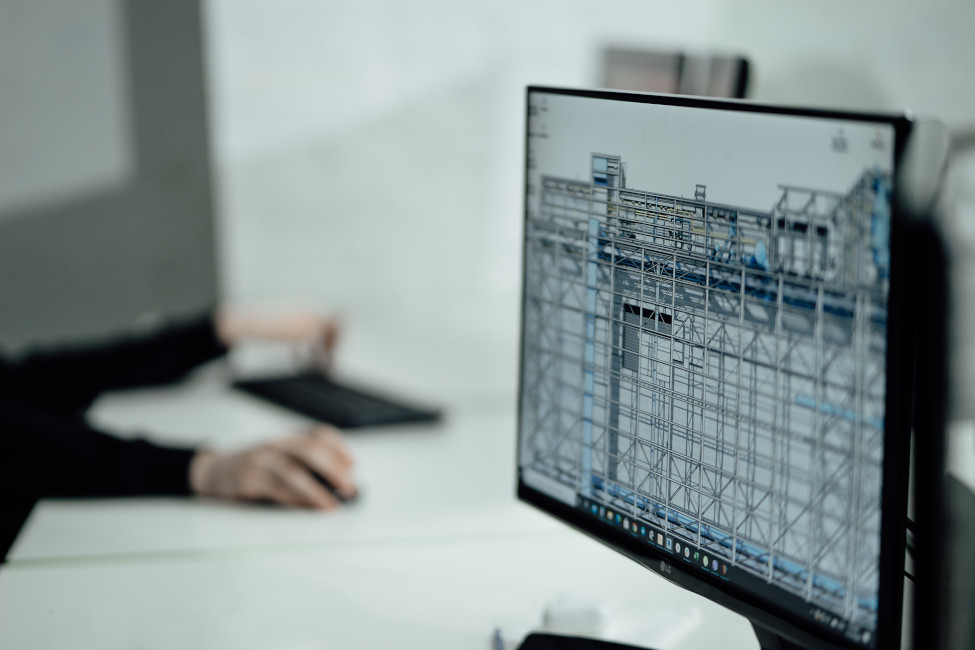Artificial intelligence and the Internet of Things in the service of BIM: the BIMAI project
28 May 2023
What environmental impact is created by renovating a building? The answer is provided by the BIMAI
(Building Information Modeling Artificial Intelligence) project, which extends the
SI4RIA
platform, also developed by GFM, with a module based on Artificial Intelligence
and Data Analytics techniques.
The advantage is that at last, in the face of changes-even potential changes-to a building, models can be built to predict chemical and physical quantities in a simplified way. Designers and building managers can thus assess in advance renovations, such as wall movement or material changes, calculating the impact they may have on the environment.
Thanks to IoT technologies, it is possible to combine information from sensors and integrate it with information related to positioning in buildings and physical properties of elements, deriving new information that enables accurate estimation of the model describing the analyzed chemical-physical property in space.
In addition, through Artificial Intelligence techniques, training can be performed for the system to learn such models so that it can make predictions and simulations as the properties of the building elements included in the BIMs change.
With its integration into the SI4RIA platform, today BIMAI is positioned in the market as an innovative tool that can facilitate the introduction of monitoring, perform life cycle assessment (LCA) and predictive analysis, and create new business-specific use cases that can produce environmental certifications more easily, thanks to the ability to adequately track impacts during all production phases.
Photo by Evgeniy Surzhan on Unsplash
The advantage is that at last, in the face of changes-even potential changes-to a building, models can be built to predict chemical and physical quantities in a simplified way. Designers and building managers can thus assess in advance renovations, such as wall movement or material changes, calculating the impact they may have on the environment.
The key role of IoT
For data collection, BIMAI employs a range of IoT technologies that enable sensor integration into the SI4RIA platform:- MQTT (Message Queue Telemetry Transport), a messaging protocol designed for communication between resource-constrained devices such as sensors, actuators and IoT devices.
- NoSQL (Not only SQL), a database designed to manage and organize large amounts of unstructured or semi-structured data (Big Data). NoSQL databases are flexible and characterized by scalability, high availability and speed of data access.
- BIM (Building Information Modeling): the information management process that uses intelligent three-dimensional models for the design, construction, and management of buildings and infrastructure. BIM enables all stakeholders involved in the life cycle of a project to collaborate and share information in real time.
An innovative tool for designing structural interventions
BIMs represent an important information source that contains both data related to the positioning of structural elements and data indicating their properties.Thanks to IoT technologies, it is possible to combine information from sensors and integrate it with information related to positioning in buildings and physical properties of elements, deriving new information that enables accurate estimation of the model describing the analyzed chemical-physical property in space.
In addition, through Artificial Intelligence techniques, training can be performed for the system to learn such models so that it can make predictions and simulations as the properties of the building elements included in the BIMs change.
With its integration into the SI4RIA platform, today BIMAI is positioned in the market as an innovative tool that can facilitate the introduction of monitoring, perform life cycle assessment (LCA) and predictive analysis, and create new business-specific use cases that can produce environmental certifications more easily, thanks to the ability to adequately track impacts during all production phases.
Photo by Evgeniy Surzhan on Unsplash
